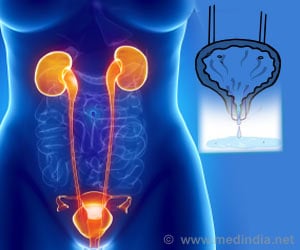Changes in a bundle of hospital cleaning practices can significantly reduce healthcare-associated infections, reveals a new study.

‘Changes in a bundle of hospital cleaning practices that focused on thoroughly cleaning 'touch points' in wards, have made notable reductions in healthcare-associated infections.’
Read More..




The study, "An environmental cleaning bundle and healthcare-associated infection in hospitals (REACH): a multi-centre randomised trial", was led by QUT health economist Professor Nick Graves from the Australian Centre for Health Services Innovation (AusHSI) at the Institute of Health and Biomedical Innovation (IHBI) and is published in The Lancet Infectious Diseases. It was funded by Australia’s National Health and Medical Research Council.Read More..
"This research project is believed to be the largest prospective, multi-site and multifactorial trial of hospital cleaning in the world," Professor Graves said.
"Its aim primarily was to investigate whether a change in cleaning practices was effective in reducing the 165,000 healthcare-associated infections in Australia each year."
Professor Graves said the REACH (Researching Effective Approaches to Cleaning Hospitals) project introduced a bundle of cleaning initiatives, tailored to each hospital in the study, to improve both routine and discharge hospital room cleaning.
Hospital-wide promotion of the importance of cleaning in reducing infections was undertaken to support a culture shift in the profile of environmental services staff, Professor Graves said.
Advertisement
"Hospitals in the study improved their cleaning practices from 55 to 76 percent in bathroom areas and from 64 to 86 percent in bedroom areas.
Advertisement
"In contrast to previous research, the cleaning bundle development prioritized evidence-based strategies that were easy to implement and lower cost, over newer expensive technologies.
"Overall, the cleaning bundle cost approximately $2,500 per 10,000 bed days to implement in participating hospitals."
The REACH cleaning bundle was successful at improving cleaning thoroughness and showed great promise in reducing vancomycin-resistant enterococci infections. It also demonstrated cost-savings and increased health benefits from infections prevented.
The intervention is broadly applicable to cleaning in any hospital, throughout the continuum of care, as it does not solely focus on discharge cleaning. Future publication of the economic outcomes of the study will provide valuable information for decision makers about the potential for investing in future hospital cleaning initiatives.
Source-Eurekalert









